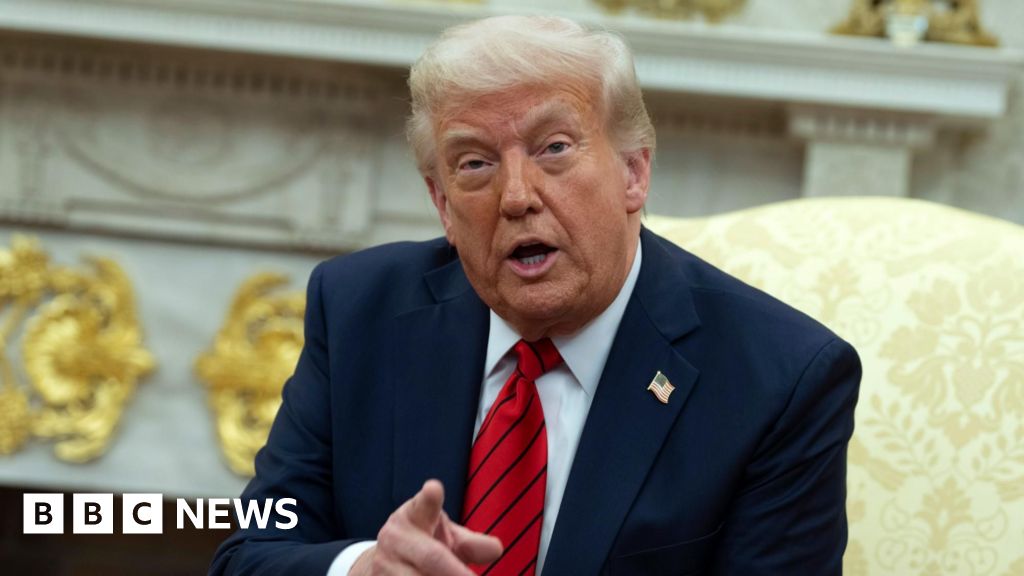Trump's Executive Order to Boost U.S. Fishing Industry Draws Mixed Reactions
PORTLAND, Maine (AP) In a bold move that has sparked significant debate, President Donald Trump has issued an executive order aimed at revitalizing the U.S. commercial fishing industry. This initiative has garnered applause from commercial fishing groups, who view it as a much-needed lifeline, while attracting sharp criticism from environmental organizations that express concern over the potential repercussions for fish populations already facing decline in many ocean areas.
This executive order marks a notable departure from previous federal policies regarding fishing in U.S. waters, as it appears to prioritize commercial fishing interests over the imperative of sustaining and increasing fish populations. President Trump characterized his decision as an easy one, claiming it will enhance the competitiveness of the U.S. commercial fishing sector by rolling back regulations and expanding harvesting opportunities in areas that were previously protected. The president pointed out that the United States currently experiences a seafood trade deficit exceeding $20 billion, emphasizing the need to become a global leader in seafood production.
Many environmental groups, however, highlight the critical role of the Magnuson-Stevens Fishery Conservation and Management Act, a cornerstone of U.S. fisheries management for nearly five decades, originally designed to combat overfishing. Alarmingly, the number of fish stocks classified as overfished by federal authorities has risen from 40 in 2013 to 47 in 2023. Conservationists argue that this trend could worsen if protective regulations are weakened, posing a significant threat to the sustainability of fish populations.
These executive orders dont loosen red tapethey unravel the very safety net that protects our oceans, our economy, and our seafood dinners, stated Beth Lowell, vice president of the conservation group Oceana. She emphasized that the U.S. has long relied on a science-based approach to fisheries management that has successfully rebuilt declining stocks, supported American fishermen, and safeguarded vital marine ecosystems.
Some sectors of the fishing industry have been severely impacted by environmental changes and overfishing, particularly in regions such as the Northeast, where lucrative industries, like the Maine shrimp and Atlantic cod fisheries, have all but vanished. The situation is similarly dire along the West Coast, where certain salmon species have also seen significant population declines.
Despite these challenges, there have been notable successes in fishery management. The federal government announced last year that it successfully removed Atlantic coast bluefish and a population of coho salmon from the overfished list, indicating that effective management can yield positive results.
Many fishermen are optimistic about the future following the issuance of Trumps executive order. Lisa Wallenda Picard, president and chief executive officer of the National Fisheries Institute in Virginia, described the changes as a thoughtful, strategic approach that could prove to be a lifeline for American fishermen. She expressed confidence that the executive order outlines essential actions that will benefit every aspect of the fishing supply chainfrom the dedicated fishermen to families who rely on seafood as a nutritious part of their diet. "Importantly, the order calls for reducing unnecessary regulatory burdens on fishermen and seafood producers while also promoting the many benefits of eating seafood as part of a healthy, balanced diet, she noted.
Coinciding with the executive order, President Trump also issued a proclamation allowing commercial fishing within the Pacific Islands Heritage Marine National Monument, which was established by President George W. Bush in 2009. This protected area spans approximately 495,189 square miles (1,282,534 square kilometers) of the central Pacific Ocean.
Environmental groups have criticized this move as well, with some vowing to mount legal challenges against attempts to relax protections in ecologically sensitive areas. David Henkin, an attorney with the conservation organization Earthjustice, remarked, This is one of the most pristine tropical marine environments in the world that already faces dire threats from climate change and ocean acidification. We will do everything in our power to protect the monument.
In response to the concerns raised by conservation advocates, the Trump administration contends that restrictions such as catch limits and competition with wind power companies for fishing grounds have hindered one of the oldest industries in the country. The executive order asserts, In addition to overregulation, unfair trade practices have put our seafood markets at a competitive disadvantage.
The executive order tasks Commerce Secretary Howard Lutnick with a month-long directive to identify the fisheries that are most heavily overregulated and to recommend appropriate actions to alleviate their regulatory burdens. Additionally, regional fishing managers have been called upon to explore avenues for reducing constraints on domestic fishing and enhancing fishing production.
Furthermore, the order mandates the development of a comprehensive seafood trade strategy and instructs Secretary Lutnick to review existing marine monuments and to provide recommendations regarding any that should be opened to commercial fishing. The focus on marine monuments aligns with President Trumps broader efforts during his first term to modify protections in these underwater areas.



























